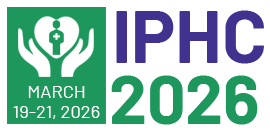Title : How does trust in media with different political orientations influence college students’ booster intention: The mediating roles of confidence and skepticism in covid-19 vaccines
Abstract:
COVID-19 vaccines have effectively mitigated the pandemic’s impact by reducing hospitalizations and deaths (Pfefferbaum & North, 2020; Polack et al., 2020). However, re-infection after full vaccination remains common, with the emergence of new variants (Levine-Tiefenbrun et al., 2021). The CDC recommends booster shots six months post-vaccination to strengthen immunity (CDC, 2024). Yet, many Americans remain reluctant due to low confidence (Tan et al., 2023) and high skepticism (Anas et al., 2023) toward COVID-19 vaccines. Trust in media shapes public perceptions of vaccine safety and efficacy, influencing hesitancy (Latkin et al., 2023). Those trusting conservative media are more likely to be skeptical of vaccines, whereas those trusting liberal media tend to have favorable attitudes (Lasher et al., 2022). Additionally, individuals with low media trust are more likely to refuse vaccines (Ahmed et al., 2022). However, the role of media trust in shaping booster intentions remains underexplored. We focused on college students, as they are vulnerable to infection due to large gatherings (e.g., classrooms, dormitories), and proposed the following hypotheses:
H1: College students’ (a) higher confidence and (b) lower skepticism in COVID-19 vaccines are associated with higher booster intentions.
H2: College students’ trust in news media with different political orientations is associated with their (a) confidence and (b) skepticism in COVID-19 vaccines.
H3: (a) Confidence or (b) skepticism in COVID-19 vaccines mediates the relationship between trust in media and booster intentions.
Method: Data were collected from 264 undergraduate students at a U.S. public university via an online Qualtrics survey. Focal variables—trust in media, vaccine confidence, vaccine skepticism, and booster intention)—were measured using established scales. Path analyses were conducted to test the hypotheses with Not Trusting News Media (NoTM) as the reference group.
Results: Booster intention was predicted by confidence in vaccines (β =. 373, p < .001) and marginally by skepticism in vaccines (β = -.141, p = 0.054), supporting H1a but not H1b. Participants who trusted left-wing/left-leaning media and trusted centrist media had significantly higher confidence (βleft= .252, p < .001; βCentrist= .146, p = .045) and lower skepticism (βleft = -0.145, p = .038; βCentrist = -0.182, p = .010) in vaccines than NoTM participants. Participants who trusted right-wing/right-leaning media or trusted other media did not differ from NoTM participants in their confidence and skepticism in vaccines. H2 was partially supported. Only the indirect effect of trust in left-wing/left-leaning media (compared to NoTM) on booster intention through confidence in vaccines (β = 0.094, p = .002) was significant, addressing H3.
Discussion: Findings highlight the critical role of media trust, particularly in liberal/centrist outlets, in shaping college students’ vaccine confidence and skepticism, which in turn affect their booster intentions. Vaccination campaigns for college students should target audiences with different media trust, especially right-wing or media-skeptical groups, to increase booster uptake. Strategies that build confidence and reduce skepticism, such as designing messages that address vaccine safety and efficacy directly and transparently, may be especially effective.



